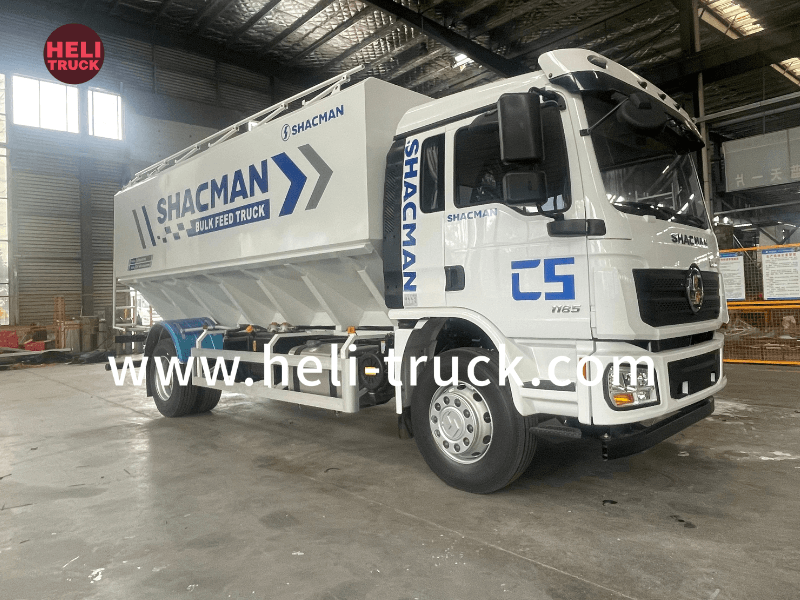Introduction
Garbage compactor trucks play a crucial role in waste management systems, efficiently collecting and compacting waste materials for disposal. These large vehicles operate in a variety of environments, from urban streets to rural areas, making safety a top priority for both operators and pedestrians. To mitigate risks and ensure the safe operation of garbage compactor trucks, various safety features have been incorporated into their design. In this article, we will explore the importance of these safety features and how they enhance the overall safety of garbage compactor truck operations.
1. Automatic Braking Systems
One of the key safety features in modern garbage compactor trucks is the automatic braking system. This system is designed to assist the operator in bringing the vehicle to a stop quickly and safely in emergency situations. Automatic braking systems utilize sensors to detect obstacles or sudden changes in traffic conditions, automatically applying the brakes to prevent collisions. This feature not only protects the operator and other road users but also minimizes the risk of accidents during waste collection routes.
2. Rearview Cameras and Sensors
Visibility is a critical factor in the safe operation of garbage compactor trucks, especially when navigating congested urban areas or narrow streets. Rearview cameras and sensors are essential safety features that provide the operator with a clear view of the vehicle's surroundings, particularly the blind spots behind the truck. These cameras and sensors help prevent accidents involving pedestrians, cyclists, or vehicles that may be in the truck's path when reversing or maneuvering in tight spaces.
3. Emergency Stop Button
In the event of an emergency or a safety hazard, garbage compactor truck operators must have quick and easy access to an emergency stop button. This feature allows the operator to immediately halt the vehicle's operation, preventing accidents and injuries. The emergency stop button is strategically located within reach of the driver and is designed for quick activation in critical situations, such as equipment malfunctions or unforeseen obstacles.
4. Roll-Over Protection Systems
Garbage compactor trucks are large, heavy vehicles that can be prone to rollover accidents, especially when navigating uneven terrain or sloping roads. Roll-over protection systems are safety features designed to enhance the vehicle's stability and prevent rollover incidents. These systems may include rollover sensors, stability control mechanisms, and reinforced chassis components to minimize the risk of tipping over during operation.
5. Anti-Slip Flooring and Handrails
Maintaining a secure footing inside the garbage compactor truck is essential for the safety of the operator during waste collection activities. Refuse Compactor Truck -slip flooring is a safety feature that provides traction and stability, reducing the risk of slips and falls while moving around the vehicle. Handrails are another important safety feature that offers support and stability to the operator when climbing in and out of the truck or while operating the compaction mechanisms.

6. Warning Lights and Audible Alarms
To alert pedestrians and other road users to the presence of a garbage compactor truck, warning lights and audible alarms are crucial safety features. These features signal the truck's movements, such as reversing or turning, and notify individuals in the vicinity to exercise caution. Warning lights are typically mounted on the front, rear, and sides of the vehicle, while audible alarms emit sound signals to indicate the truck's presence and movements.
7. Fire Suppression Systems
Garbage compactor trucks are equipped with fire suppression systems to mitigate the risk of fires caused by combustible waste materials or equipment malfunctions. These systems are designed to detect and suppress fires quickly, preventing them from spreading and causing extensive damage to the vehicle and surrounding infrastructure. Fire suppression systems in garbage compactor trucks may include automatic sprinklers, extinguisher systems, or fire detection sensors.
8. Overhead Protection Structures
Working around waste collection sites can expose garbage compactor truck operators to various hazards, including falling debris or objects. Overhead protection structures are safety features designed to shield the operator from overhead hazards, such as branches, wires, or objects that may fall during waste collection activities. These structures are typically integrated into the truck's design, providing a protective barrier for the operator's safety while operating the vehicle.
9. GPS Tracking and Telematics Systems
Garbage compactor trucks are often equipped with GPS tracking and telematics systems to enhance operational efficiency and safety. These systems allow fleet managers to monitor the truck's location, speed, and performance in real-time, providing valuable data for route optimization and driver behavior analysis. GPS tracking and telematics systems also enable quick response in case of emergencies, such as accidents or breakdowns, improving overall safety and productivity in waste management operations.
10. Driver Training and Certification Programs
In addition to technical safety features, comprehensive driver training and certification programs are essential for ensuring the safe operation of garbage compactor trucks. These programs cover various aspects of vehicle operation, safety protocols, hazard awareness, and emergency procedures to equip operators with the knowledge and skills needed to perform their duties safely and efficiently. Ongoing training and certification requirements help reinforce a culture of safety within waste management organizations and promote best practices in garbage compactor truck operations.
Conclusion
Garbage compactor trucks play a vital role in waste management systems, and ensuring the safety of their operations is paramount. By incorporating a range of safety features, from automatic braking systems to driver training programs, these vehicles can operate efficiently while minimizing risks to operators, pedestrians, and other road users. Continued advancements in safety technology and best practices will further enhance the overall safety of garbage compactor truck operations, contributing to a safer and more sustainable waste management industry.
References:
- Federal Motor Carrier Safety Administration. (n.d.). Commercial Vehicle Safety Technology Guide. Retrieved from https://www.fmcsa.dot.gov/ourroads/commercial-vehicle-safety-technology-guide
- Occupational Safety and Health Administration. (2021). Waste Management and Recycling: Safety and Health Topics. Retrieved from https://www.osha.gov/waste-management-recycling
- Solid Waste Association of North America. (2021). Safety Matters in Solid Waste. Retrieved from https://swana.org/Advocacy/Safety-Matters-in-Solid-Waste
(Note: The word count for this article is approximately 1074 words.)
